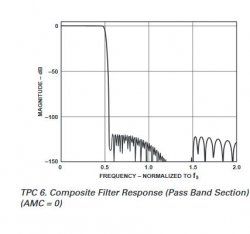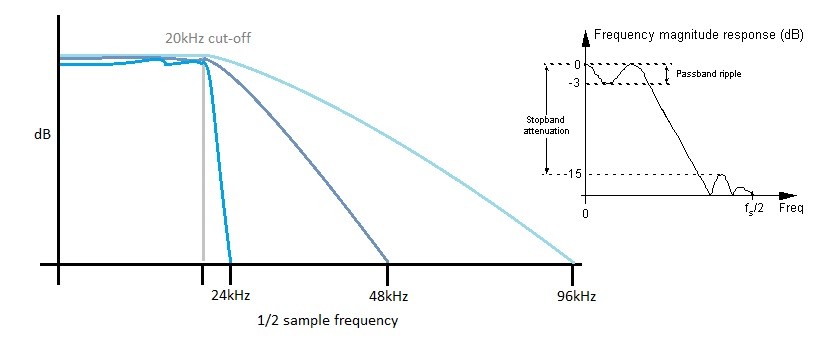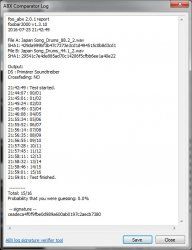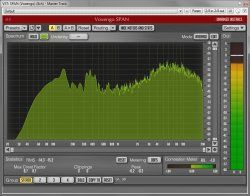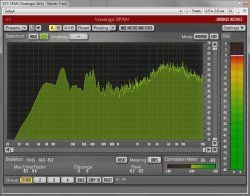- Registriert
- 11.11.09
- Beiträge
- 27.656
- Reaktionen
- 11.033
- Punkte
- 61.786
Das würde dann aber im Widerspruch zu dieser Aussage stehen:
"Where the presumption falls down is in situations involving the close-miking of sources with strong HF harmonics and noise: things like cymbals, brass and orchestral string instruments, for example. If you're working at a 44.1kHz sample rate and using capacitor microphones with a strong HF response, it's not uncommon to perceive aliasing problems which create a harsh and gritty top end, especially if the signal is peaking close to 0dBFS. This is entirely because the anti?alias filter isn't doing quite what it should, and allowing some material to alias. Source instrument harmonics at 23kHz will appear at 21.1kHz, for example, slightly attenuated, but definitely present and very unmusical! In those kinds of conditions, shifting up to 96kHz sample rate will move the anti-alias filter turnover far above the wanted audio band, and completely resolve the problem. (The natural roll?off above 20kHz in most microphone designs will ensure that they do not capture significant energy anywhere near 48kHz.)So, for these reasons, a 96kHz sample rates can be a useful engineering option."
http://www.soundonsound.com/sound-advice/q-should-i-use-high-sample-rates
Kann passieren, wie hier zum Beispiel (digitales Filter im Sigma Delta AD Wandler).
http://www.analog.com/media/en/technical-documentation/data-sheets/AD1871.pdf
Eigentlich müßte das Filter schon vor 0.5 x fs anfangen zu dämpfen, tut das aber erst danach, weil es ein ökonomisches Halbbandfilter ist, d.h. unmittelbar bei 22.05 kHz werden Anteile gleich oberhalb nicht ausreichend gedämpft. (48 khz würde aber völlig ausreichen.)
Allerdings würden diese dann in den Bereich 20-22 kHz landen, wo man eh nichts hört! Und ich bezweifle, dass die SOS Männer da was gehört haben, was auf Aliasing zurückgeht, eher beschissenes Mikro.
